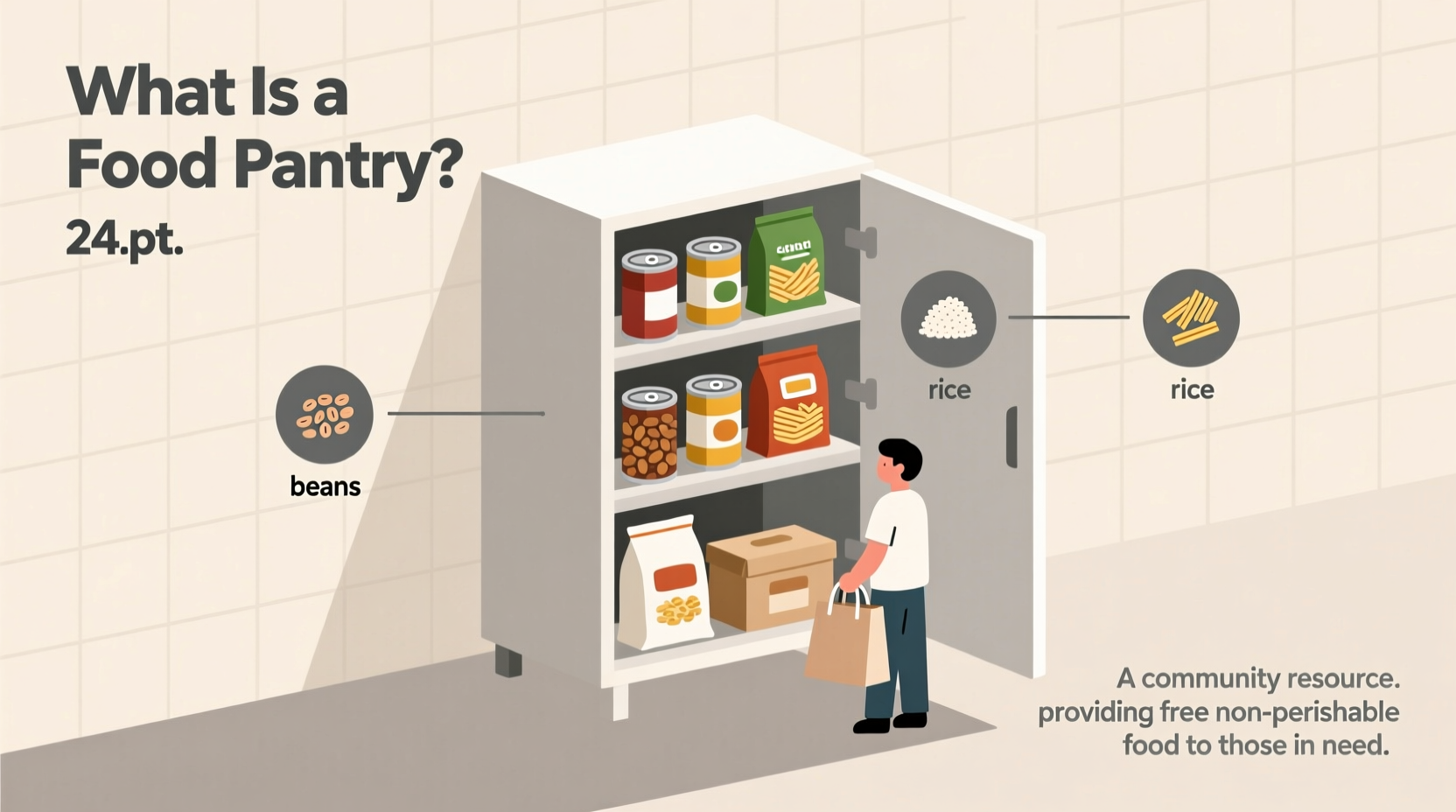A food pantry is a community-based distribution center that provides free groceries to individuals and families facing food insecurity. Unlike soup kitchens that serve prepared meals, food pantries offer shelf-stable and fresh food items for clients to prepare at home, operating primarily through donations and volunteer support.
When financial hardship strikes, knowing where to find reliable food assistance can be overwhelming. Understanding what a food pantry is—and how it differs from other food assistance programs—provides immediate clarity for those navigating food insecurity. This guide delivers practical, actionable information about food pantries, including how they operate, who they serve, and how to access these vital community resources.
How Food Pantries Actually Work: The Distribution Chain
Food pantries form the final link in a sophisticated food assistance network. While often confused with food banks, they serve distinct roles:
| Feature | Food Bank | Food Pantry |
|---|---|---|
| Primary Function | Large-scale food distribution hub | Direct client service location |
| Typical Size | Warehouse facilities (10,000+ sq ft) | Community spaces (500-2,000 sq ft) |
| Client Interaction | Serves pantries and agencies | Serves individuals and families |
| Food Handling | Receives bulk donations | Distributes pre-packaged groceries |
According to Feeding America's 2023 network data, food banks collect and distribute approximately 4.3 billion meals annually to over 200,000 local agencies, including food pantries that directly serve communities. This system ensures perishable and non-perishable items move efficiently from donors to those in need.

Who Operates Food Pantries and How They're Funded
Food pantries typically operate through one of three models:
- Religious organizations (62% of pantries) - Churches, synagogues, and mosques often host pantries as part of community outreach
- Nonprofit organizations (28%) - Standalone nonprofits focused specifically on hunger relief
- Social service agencies (10%) - Often integrated with other services like housing assistance or job training
Funding comes from diverse sources including individual donations (47%), government programs (22%), corporate contributions (18%), and community food drives (13%), according to the National Association of Letter Carriers' 2024 Hunger Survey. This multi-source funding model helps pantries maintain consistent operations despite economic fluctuations.
Accessing Food Pantry Services: What to Expect
Visiting a food pantry involves several straightforward steps designed to maintain dignity and efficiency:
- Verification - Most pantries require proof of residency (utility bill, ID with address) and household size (birth certificates)
- Registration - Complete a brief intake form (typically takes 5-10 minutes)
- Shopping or Pre-Packaging - Some pantries operate as client-choice models where you select items, while others provide pre-assembled boxes
- Distribution - Receive groceries (typically enough for 3-5 days of meals)
The USDA's Economic Research Service reports that 92% of food pantries serve clients within 30 minutes of arrival, with most operating during evening hours to accommodate working individuals. Many now offer drive-thru distribution options developed during the pandemic that have proven efficient for ongoing use.
Finding the Right Food Pantry for Your Needs
Locating appropriate food assistance requires understanding specific pantry characteristics:
- Specialized pantries - Some serve specific populations like seniors, veterans, or families with infants
- Language accessibility - 41% of urban pantries offer multilingual staff or materials (Feeding America 2024)
- Dietary accommodations - Increasing numbers offer kosher, halal, or allergy-friendly options
- Transportation access - Many partner with ride-share programs for those without vehicles
Use these verified resources to find pantries in your area:
- Feeding America's national pantry locator (feedingamerica.org/find-your-local-foodbank)
- 211 helpline (dial 211 or visit 211.org)
- USDA Food and Nutrition Service local assistance finder
How Food Pantries Fit Within Broader Food Security Systems
Food pantries function as emergency response within a comprehensive food security ecosystem. They complement but don't replace government nutrition programs:
- SNAP (food stamps) - Provides monthly benefits for grocery purchases (serves 42 million Americans)
- WIC - Specialized nutrition for pregnant women and young children
- School meal programs - Provide breakfast and lunch during academic year
- Food pantries - Bridge gaps between government benefits and immediate needs
Research from the Urban Institute shows that 68% of pantry clients also participate in SNAP, using pantries to supplement benefits that often run out before month's end. This integrated approach creates a more resilient safety net for vulnerable populations.
Supporting Your Local Food Pantry: Practical Ways to Help
Community support keeps pantries operational. Beyond monetary donations, consider these impactful contributions:
- Targeted food donations - Pantries often need specific items (check their website for current needs)
- Skill-based volunteering - Accounting, translation, or refrigeration repair skills are often needed
- Advocacy - Contact elected officials about policies affecting food security
- Food drives - Organize collections at workplaces or schools with pantry coordination
The most effective support aligns with pantry needs—calling ahead to confirm current priorities prevents donation overload of less-needed items. Many pantries now accept virtual donations where funds purchase fresh produce directly from local farmers.











 浙公网安备
33010002000092号
浙公网安备
33010002000092号 浙B2-20120091-4
浙B2-20120091-4